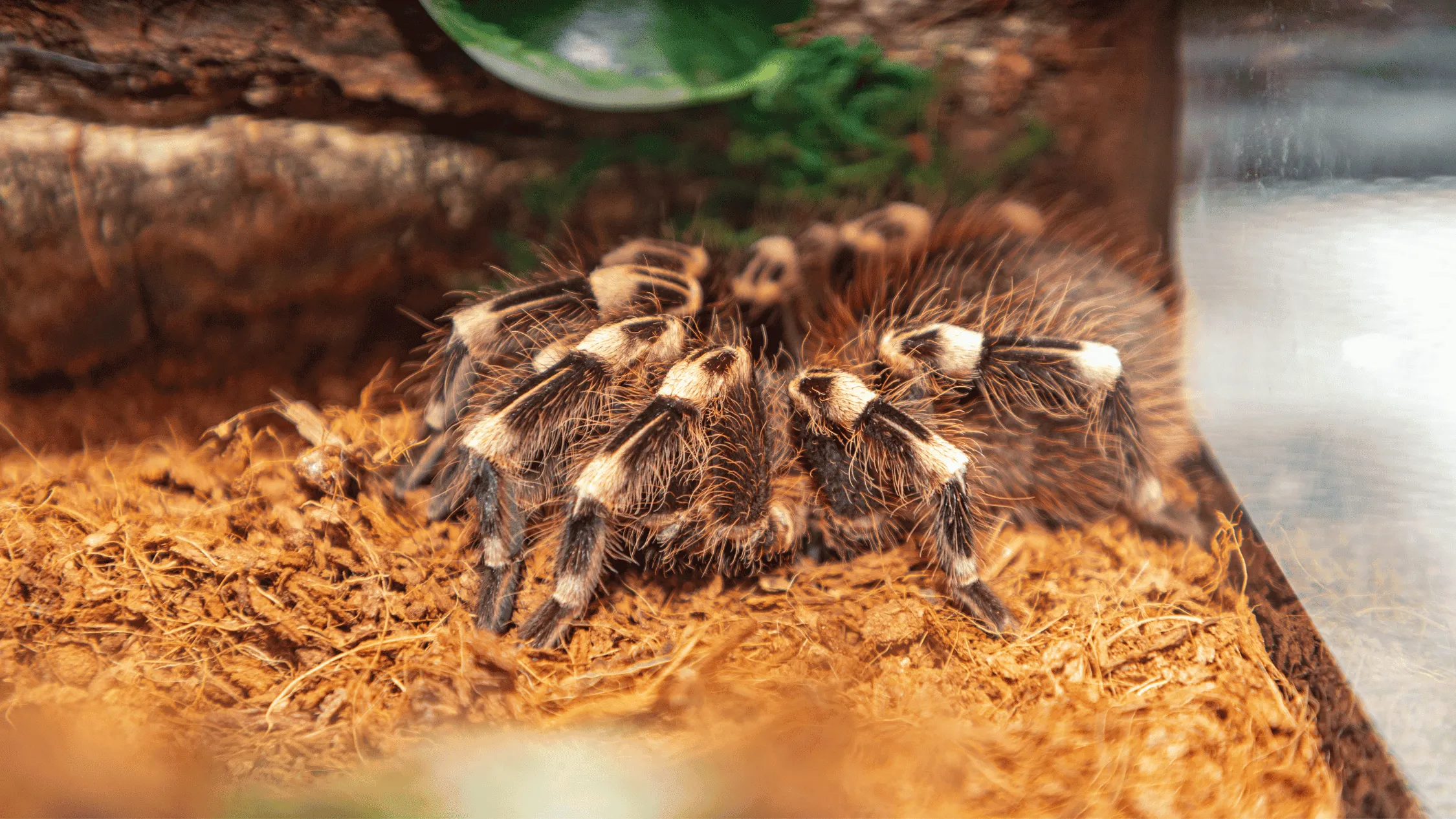Top 5 Tarantula Breeds for New Owners
Considering a unique pet? Tarantulas, with their captivating appearance and relatively low maintenance needs, are becoming increasingly popular. But with over 900 species, choosing the right tarantula breed can be daunting for beginners. This guide highlights the top 5 tarantula breeds ideal for new owners, detailing their characteristics, care requirements, and why they make excellent pets. Before you bring home your first eight-legged friend, it is crucial to research and understand their specific needs to ensure a happy and healthy life for your new pet. So, let’s delve into the fascinating world of tarantulas and discover the perfect breed for you.
Why Tarantulas Make Great Pets
Tarantulas offer a unique pet-keeping experience, setting them apart from more conventional pets. Their appeal lies in several key factors, making them an excellent choice for many pet owners. Tarantulas are relatively low-maintenance pets compared to dogs or cats. They don’t require daily walks, extensive grooming, or constant attention, making them ideal for busy individuals or those with limited space. The low-maintenance nature of tarantulas is a significant draw for many, providing the joy of pet ownership without the constant demands. In addition to being low-maintenance, tarantulas exhibit fascinating behaviors, captivating their owners with their intricate routines. Observing tarantulas hunt, molt, and interact with their environment provides a unique and engaging pet-keeping experience. The slow, deliberate movements and unique hunting styles of tarantulas are a source of endless fascination for their owners. This interesting behavior keeps people engaged.
Low Maintenance
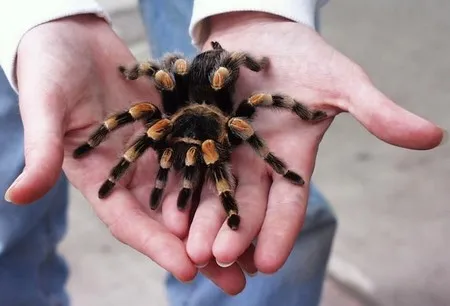
One of the biggest advantages of owning a tarantula is the minimal daily upkeep required. Unlike many other pets, tarantulas do not need to be walked, played with, or constantly supervised. Feeding usually occurs once or twice a week, and enclosure cleaning is needed every few weeks to a month, depending on the species and enclosure size. This makes tarantulas a perfect option for those with busy schedules or those who want a pet that is not overly demanding of their time. Additionally, their housing needs are simple and straightforward, requiring only a suitable enclosure, substrate, and hiding place.
Fascinating Behavior
Tarantulas are creatures of habit, and their routines can be quite captivating to observe. From the intricate process of molting, where they shed their exoskeleton to grow, to their patient hunting strategies, tarantulas provide a window into a world of unique behavior. The way they construct their burrows, their feeding habits, and even their defensive postures offer a compelling glimpse into the natural world, which provides endless entertainment and educational opportunities for their owners. Observing their behaviors can also help you understand their needs and ensure they are healthy and comfortable in their habitat. This is a great opportunity for those wanting to study animal behavior.
Variety of Species
The sheer variety of tarantula species offers a diverse range of options for potential pet owners. From the vibrant colors of the Pinktoe Tarantula to the robust size of the Goliath Birdeater, there is a tarantula to suit every taste and preference. Each species comes with its unique characteristics in terms of appearance, temperament, and care requirements. This diversity allows prospective owners to choose a tarantula that best fits their lifestyle and experience level. Whether you prefer a docile species or a more active one, the array of choices ensures that there is a tarantula for everyone. Each species is different, so make sure you know what kind of tarantula you are getting.
The Top 5 Tarantula Breeds
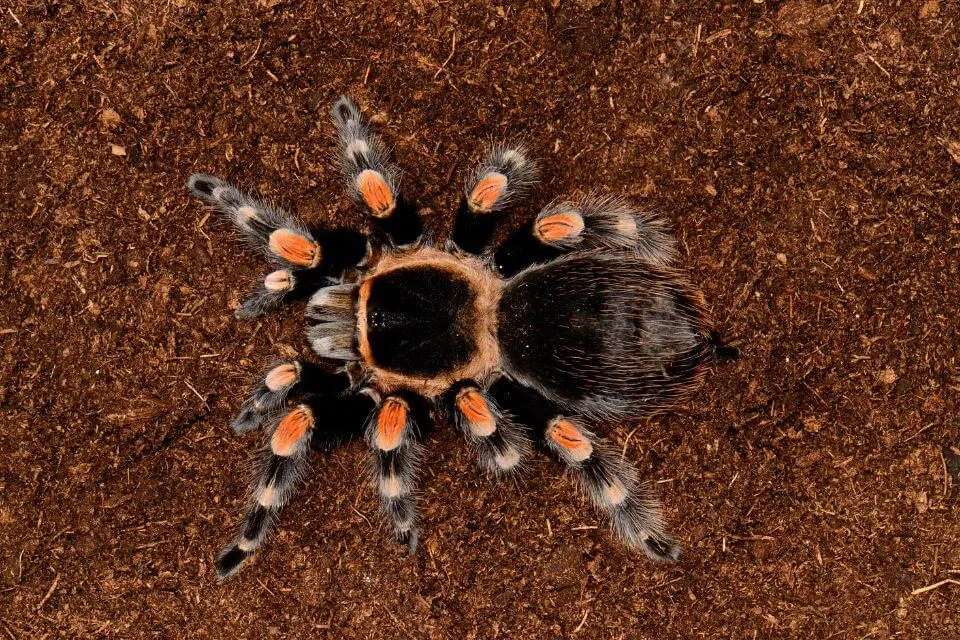
1. Chilean Rose Hair Tarantula
The Chilean Rose Hair tarantula (Grammostola rosea) is a classic beginner choice. It’s known for its docile temperament and relatively slow movements, making it less intimidating for new keepers. These tarantulas typically have a brown or tan coloration with pinkish hairs, giving them their name. They are relatively hardy and can tolerate minor fluctuations in their environment, making them a forgiving choice for beginners. With their longevity and calm demeanor, the Chilean Rose Hair tarantula is a great starter pet.
Appearance and Characteristics
These tarantulas are typically a uniform brown color, with reddish hairs that give them a rose-like appearance, especially when they molt. They are medium-sized tarantulas, with females reaching up to 6 inches in leg span. They are known for being relatively slow-moving and are less likely to flick hairs as a defense mechanism, adding to their appeal for new keepers. Their modest size and attractive coloration make them visually appealing pets.
Temperament and Care
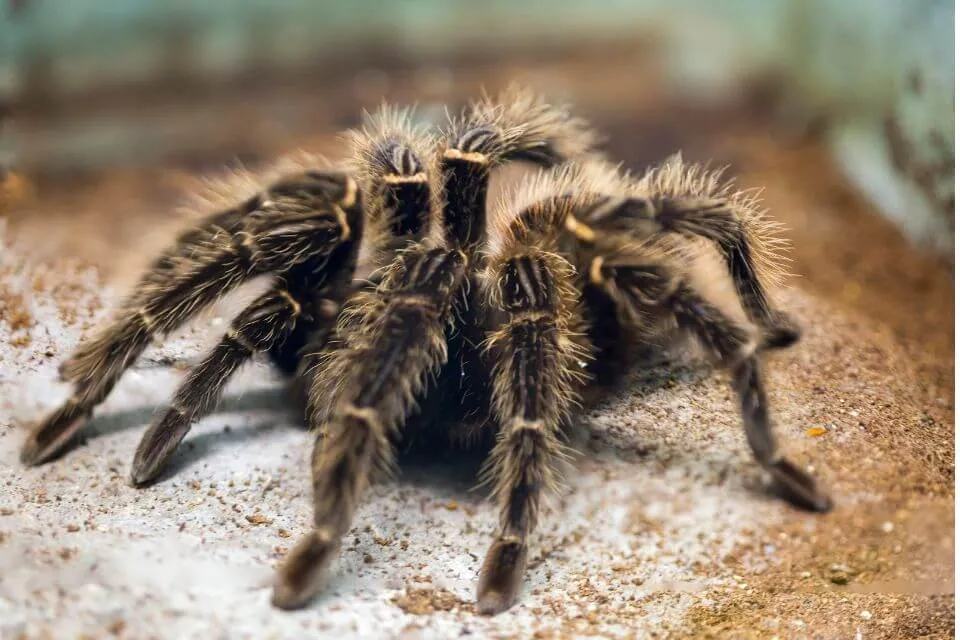
Chilean Rose Hair tarantulas are known for their calm temperament. They are usually docile and rarely bite unless provoked. They thrive in a simple setup: a 5-10 gallon terrarium with a substrate like coconut fiber, a shallow water dish, and a hide. Maintaining a temperature between 70-80°F and moderate humidity is generally sufficient. Feeding once or twice a week with appropriately sized insects, such as crickets or mealworms, is usually enough. Handling should be kept to a minimum to avoid stressing the tarantula.
2. Mexican Red Knee Tarantula
The Mexican Red Knee tarantula (Brachypelma hamorii) is another popular choice for beginners, renowned for its striking appearance. Its black body and vibrant red-orange markings on its leg joints make it visually stunning. Known for being relatively docile, this species is a favorite among enthusiasts. While slightly more demanding than the Chilean Rose Hair, its beauty and manageable care requirements make it a worthwhile option for new owners wanting a more visually captivating tarantula. Their vibrant colors make them the center of attention.
Appearance and Characteristics
These tarantulas are easily recognized by their striking black and red-orange coloration. Their legs feature vibrant red-orange bands at the joints, contrasting sharply with the black segments. Females can grow up to 6-8 inches in leg span, while males are generally smaller. The striking colors make them one of the most visually appealing tarantulas. They are also known for their docile behavior, which makes them easy to care for.
Temperament and Care
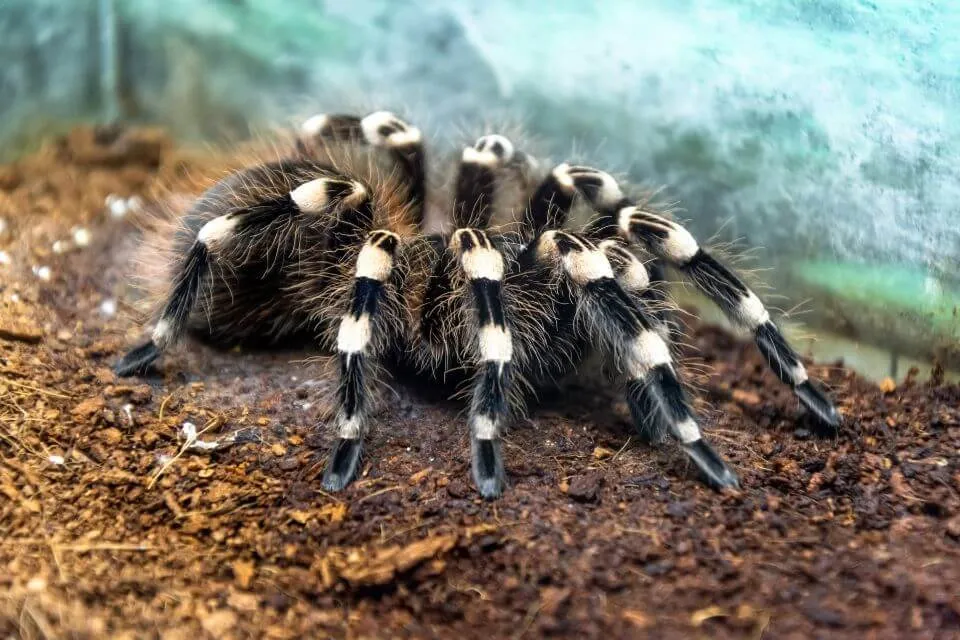
Mexican Red Knee tarantulas are generally docile but can flick urticating hairs as a defense mechanism. They require a terrarium with a substrate of coconut fiber or a similar material, a hide, and a water dish. A temperature range of 75-85°F and moderate humidity levels is recommended. Feeding involves insects like crickets or mealworms, once or twice a week. As with all tarantulas, handle them only when necessary to minimize stress.
3. Pinktoe Tarantula
The Pinktoe Tarantula (Avicularia avicularia) offers a vibrant, arboreal (tree-dwelling) option for those seeking a visually distinct pet. These tarantulas are known for their striking appearance, with a dark body and vibrant pink or orange toe tips. They differ from the ground-dwelling species in their behavior and habitat requirements. For beginner keepers looking for a more active, visually appealing tarantula, the Pinktoe Tarantula is a wonderful option. Their unique appearance and vibrant personalities make them very special.
Appearance and Characteristics
These tarantulas are arboreal, meaning they live in trees. They are typically dark in color, often with iridescent hairs on their carapace. The most striking feature is the vibrant pink or orange tips on their toes, which give them their name. They are smaller than many other species, with females reaching up to 5 inches in leg span. Their unique appearance sets them apart from the terrestrial species.
Temperament and Care

Pinktoe tarantulas are generally docile but can be skittish and may move quickly if startled. They require an arboreal setup, with a tall terrarium equipped with branches, cork bark, and a water dish. They need higher humidity levels than ground-dwelling species, achieved through regular misting. The ideal temperature range is between 75-80°F. Feeding consists of insects such as crickets or fruit flies, several times a week. Handling should be kept to a minimum due to their skittish nature and arboreal lifestyle.
4. Costa Rican Zebra Tarantula
The Costa Rican Zebra Tarantula (Aphonopelma seemanni) is another excellent choice. It is also known as the Stripe-Knee Tarantula, this species boasts a beautiful striped pattern on its legs and is a good option for beginner keepers. The combination of its appearance, temperament, and care requirements makes it a great choice for new owners. They are known for their relatively docile temperaments and are typically less prone to defensive behavior. Their striking patterns make them highly sought after.
Appearance and Characteristics
The Costa Rican Zebra Tarantula is characterized by its distinctive zebra-like stripes on its legs, alternating bands of black and white. They are a medium-sized species, with females reaching up to 6 inches in leg span. They have a relatively stocky build and a moderately hairy body, adding to their visual appeal. Their unique patterns provide them with their names.
Temperament and Care
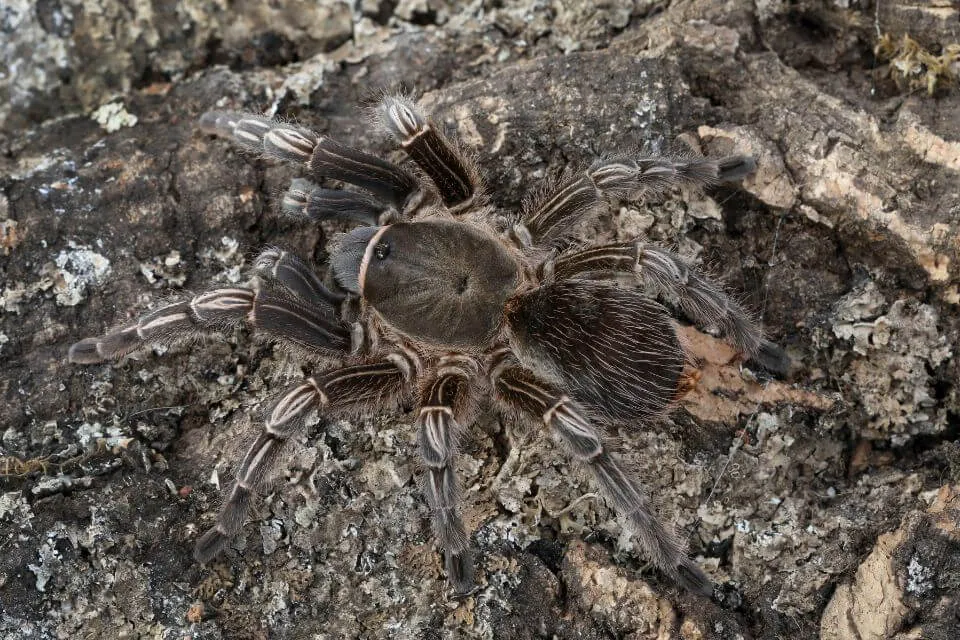
This species is typically docile but can kick urticating hairs if threatened. They require a terrestrial setup, including a terrarium with a substrate like coconut fiber or peat moss, a hide, and a shallow water dish. Maintain a temperature between 70-80°F and moderate humidity levels. They can be fed insects, such as crickets or mealworms, a couple of times a week. They should be handled with care to avoid any potential defensiveness.
5. Curly Hair Tarantula
The Curly Hair Tarantula (Tliltocatl albopilosus) is a very popular choice due to its gentle nature and ease of care. They are characterized by their unique appearance, with a dark body covered in curly, golden hairs. They are known for being docile and are generally well-suited for beginners. Their appealing looks and manageable requirements make them a great entry point into the world of tarantula keeping. They are very attractive and popular among hobbyists.
Appearance and Characteristics
These tarantulas are known for their distinctive appearance, with a dark body covered in curly, golden hairs. They are medium-sized, with females reaching up to 6 inches in leg span. The curly hairs give them a unique, fluffy appearance. They are often described as having a friendly appearance due to their soft-looking hairs.
Temperament and Care
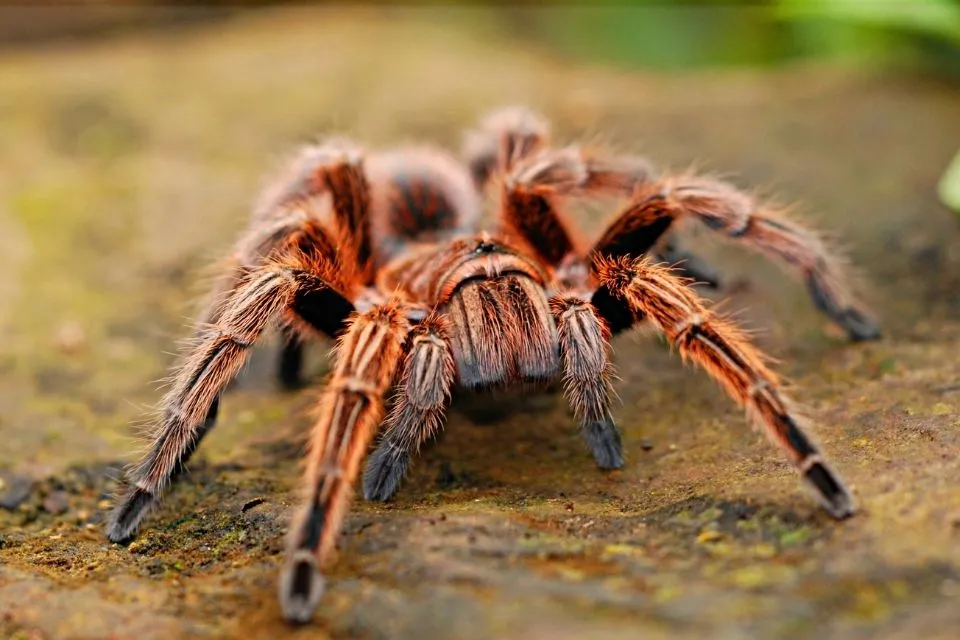
Curly Hair tarantulas are renowned for their calm and docile temperament. They require a terrestrial setup, including a terrarium with a substrate like coconut fiber, a hide, and a shallow water dish. They thrive in a temperature range of 70-80°F and moderate humidity levels. Feeding consists of insects, such as crickets or mealworms, once or twice a week. They are suitable for handling but should be done with care to minimize stress.
Caring for Your Tarantula
Enclosure Setup
Creating the right enclosure is key to your tarantula’s well-being. The size of the enclosure should correspond to the size of your tarantula, with enough space to move and explore. For terrestrial species, a terrarium that is wider than tall is preferable. Arboreal species require taller enclosures to accommodate their climbing needs. Ensure that the enclosure has good ventilation to prevent mold and bacteria growth. Secure lids are a must to prevent escape, with the top of the enclosure a crucial feature. All of these elements will ensure a happy tarantula.
Substrate and Decor
The substrate, or bedding, should be appropriate for the species. Coconut fiber, peat moss, and a mix of these materials work well for many terrestrial species. Arboreal species may benefit from a substrate that holds more moisture. Decor includes a hide, such as a cork bark or a half-log, where the tarantula can feel safe and secure. Provide a water dish with fresh water, ensuring it’s shallow enough to prevent drowning. Including plants, both real and fake, can add humidity and visual appeal to the enclosure. Make sure that you know what kind of substrate your tarantula needs.
Temperature and Humidity
Maintaining the correct temperature and humidity levels is essential. Research the specific requirements of your chosen species, as they vary. Generally, a temperature between 70-80°F is suitable for most tarantulas. Humidity can be achieved through regular misting (for arboreal species) or by providing a water dish (for terrestrial species). A hygrometer can help you measure humidity levels, which will help you take better care of your tarantula. Stable environments are crucial for their health and well-being. Proper monitoring is important to make sure your tarantula is in good condition.
Feeding and Watering
Feeding frequency depends on the species, the age of the tarantula, and how often they eat. Typically, juvenile tarantulas should be fed more frequently than adults. Provide appropriately sized insects, such as crickets, mealworms, or roaches. Avoid feeding wild-caught insects, as they may carry parasites or pesticides. Remove any uneaten food after 24 hours to prevent mold. Always ensure your tarantula has access to fresh, clean water in a shallow dish. It’s important to always have clean water accessible to them.
Handling and Safety
Handling a tarantula is not recommended unless absolutely necessary. Tarantulas are fragile, and dropping them can lead to injury or death. Some species have urticating hairs that can cause skin irritation, and all tarantulas can bite, which can be painful. If handling is necessary, do so close to the ground or a soft surface. Always wash your hands thoroughly before and after handling to avoid spreading any potential toxins or pathogens. Understanding the potential risks and taking precautions will ensure you can safely interact with your tarantula.
Conclusion
Choosing the right tarantula breed is a significant step toward successful pet ownership. The Chilean Rose Hair, Mexican Red Knee, Pinktoe, Costa Rican Zebra, and Curly Hair tarantulas are excellent choices for new owners due to their manageable care requirements, docile temperaments, and striking appearances. By providing the proper enclosure setup, understanding their needs, and practicing safe handling, you can enjoy a fascinating and rewarding experience with your tarantula. Remember to always research the specific species you are considering and prepare to provide the best possible care for your new eight-legged companion. With the right knowledge and dedication, you can embark on a rewarding journey into the world of tarantulas.
